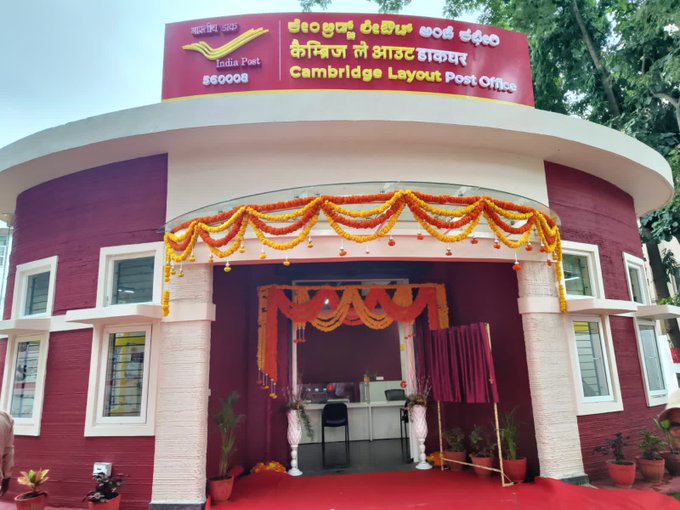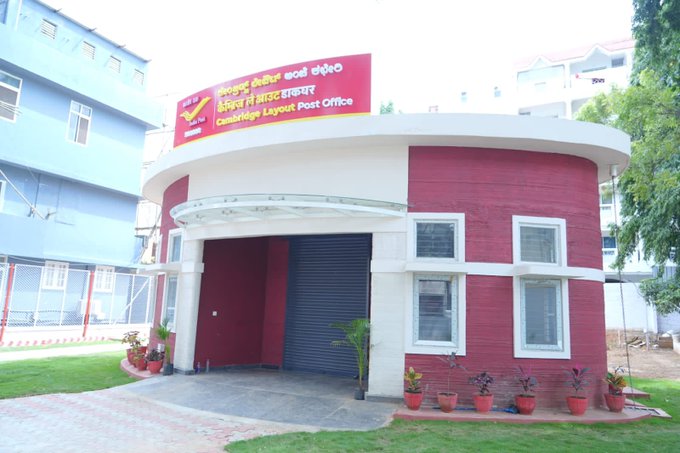The first-ever state- of- art, post office to be ever built using 3D printing technology, was inaugurated by Union Minister Ashwini Vaishnaw. In a remarkable fusion of technology and communication, the world recently bore witness to a groundbreaking achievement—the unveiling of the very first 3D-printed post office.
Table of Contents
Technological Marvel: 3DPost office
India’s maiden 3D-printed post office was brought to life using an intricate dance of robotic precision and computerized design. Employing a specially calibrated 3D printer, the structure was crafted layer by layer using concrete material, all guided by a computer-generated 3D model drawing input. This unique approach revolutionizes traditional construction methods, demonstrating the nation’s readiness to embrace innovation.

Delicate Balance: Crafting the Foundation
The construction of the 1,021 square feet post office was not a mere technological feat; it was a delicate symphony of engineering and concrete properties. The process demanded a meticulous equilibrium of concrete characteristics, including flowability, rapid hardening to ensure load-bearing capacity, and the strength essential for a successful print. This harmonious blend ensured that the 3D-printed post office would not only stand as a remarkable structure but also serve its functional purpose effectively.
Rapid Evolution: Time and Cost Efficiency
The speed at which the 3D-printed post office came to life is a stark departure from traditional construction timelines. With the conventional method typically taking six to eight months, the entire 3D printing process, from concept to completion, was accomplished within a mere 45 days. This dramatic reduction in time underscores the efficiency of 3D-concrete printing technology, making it a compelling alternative to conventional building practices. Moreover, the cost savings associated with this revolutionary approach have the potential to reshape the economics of construction.

Leadership and Collaboration: A Joint Endeavor
The realization of India’s first 3D-printed post office was a collective effort involving key players. Construction behemoth Larsen & Toubro Limited brought the concept to life, while the technical expertise of IIT Madras provided essential guidance. This partnership between industry and academia exemplifies India’s commitment to fostering innovation through collaboration.

Prime Minister’s Acclaim: A Testimony to Progress
Prime Minister Narendra Modi lauded the monumental achievement, hailing it as a symbol of India’s innovation and progress. The 3D-printed post office stands as an embodiment of the nation’s aspiration for self-reliance, echoing the “Make in India” initiative. By celebrating this achievement, India showcases its capacity to adapt and flourish in a rapidly evolving technological landscape
Conclusion
India’s inaugural 3D-printed post office marks a significant stride towards innovation and self-reliance. The fusion of technology, engineering, and visionary leadership has resulted in a groundbreaking structure that not only defies conventional construction methods but also symbolizes the nation’s journey towards progress.












